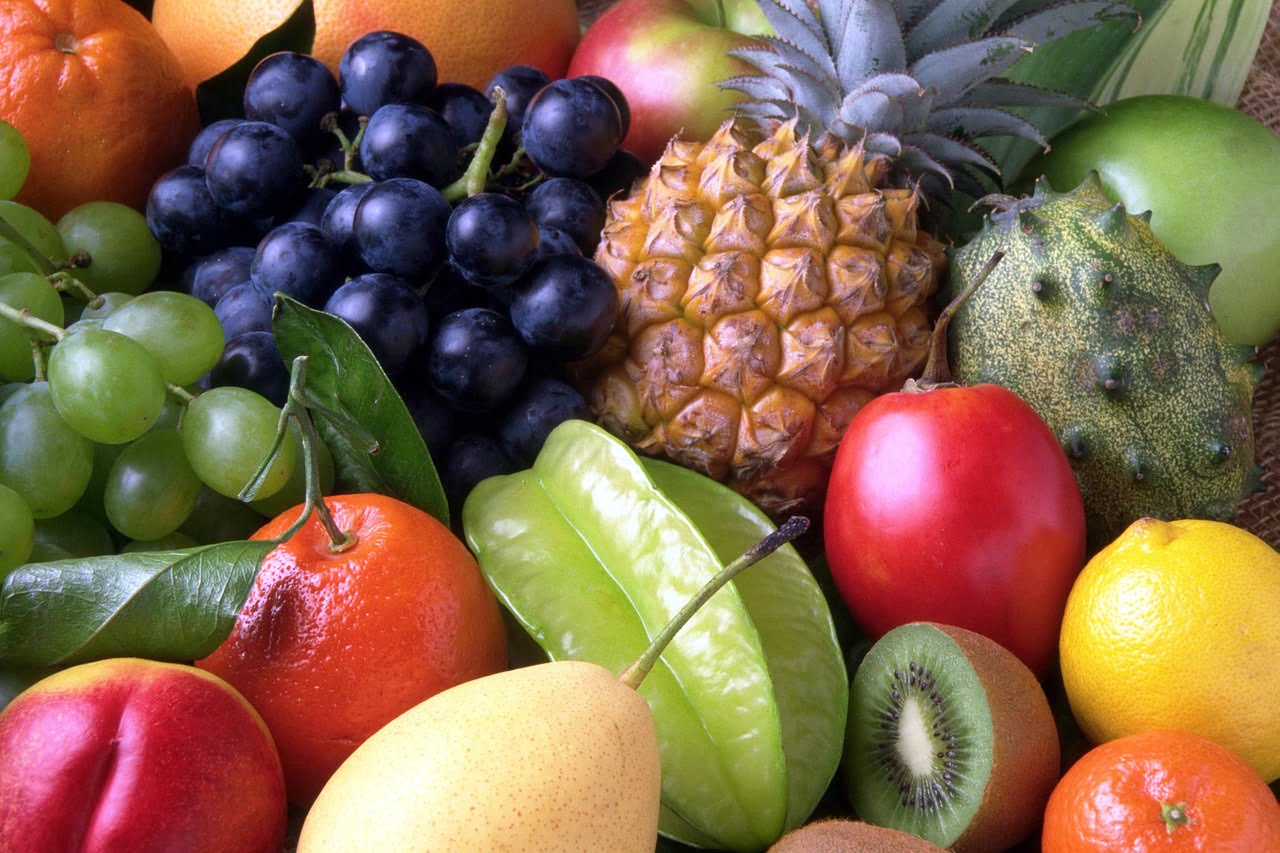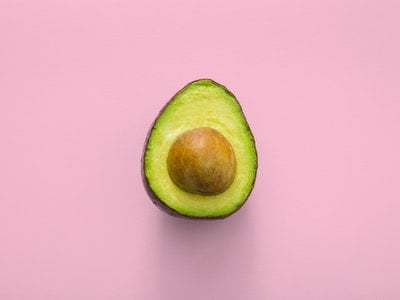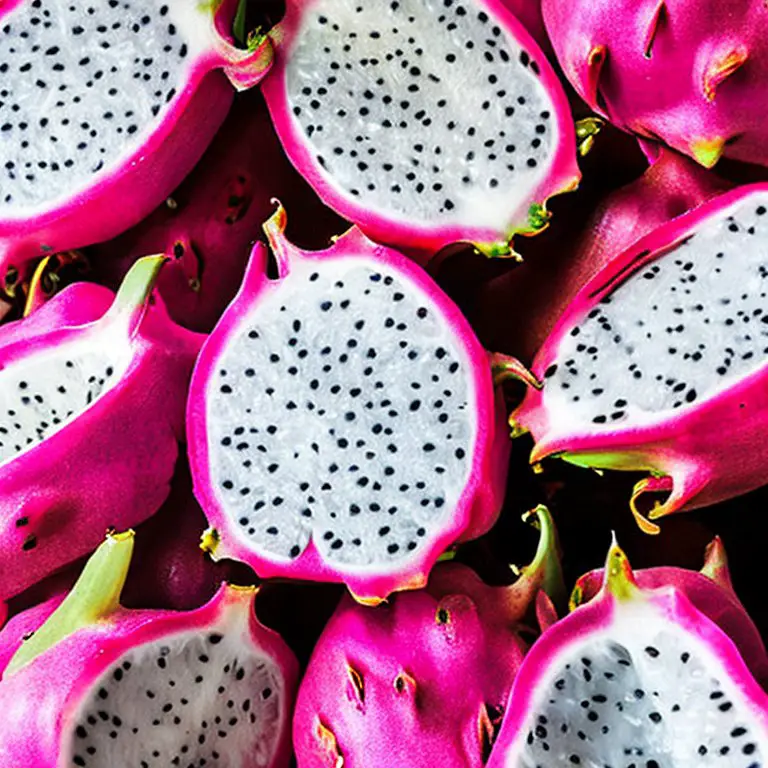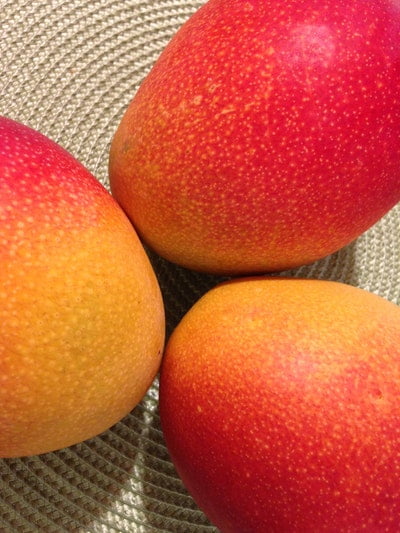
Tropical fruits are a feast for the senses, offering an array of colors, textures, and flavors. From the juicy and sweet papaya to the tangy and aromatic passion fruit, these fruits have captured the hearts of many food enthusiasts. (For the best tropical fruits, see Top 10 Tropical Fruits)
Not only do they provide unique tastes, but they are also packed with vitamins, minerals, and antioxidants that are essential for a healthy diet. If you’re ready to take your taste buds on a tropical adventure, then join us as we explore the world of tropical fruits from A to Z. (For lists of fruits that also include non-tropical fruits, also see Fruits List A-Z and Lists of Fruits A-Z)
Avocado
A highly sought-after fruit, the avocado is renowned for its luscious texture and flavorful taste. This Central and South American native is a staple in a wide range of recipes, including guacamole, smoothies, and salads.

Apart from being delicious, avocados are packed with a healthy serving of monounsaturated fats, fiber, and an array of vitamins and minerals. These creamy fruits also contain phytochemicals that boast antioxidant and anti-inflammatory properties.
Banana
Bananas are a globally consumed fruit, enjoyed for their excellent potassium content, dietary fiber, and vitamin C. Their innate sweetness makes them ideal as a natural sweetener in baked goods and smoothies, and they also work well sliced up in cereals or yogurt for a quick and nutritious snack.
Cherimoya
Sometimes referred to as the “custard apple,” the cherimoya is a tropical fruit that hails from South America. This fruit’s cream-like texture and unique flavor, which some describe as a mix of pineapple and banana, make it a delight to the taste buds. Cherimoyas are also high in iron, vitamin C, and fiber.
Coconut
The coconut is a versatile fruit with a variety of uses in tropical cuisine. Its flesh can be grated and used in baking and cooking, and the milk and oil are often used as a foundation for stews and sauces. Young coconut water is a preferred drink, thanks to its electrolytes and vitamin content. In addition to its culinary uses, coconut oil is also used to promote healthy hair and skin.
Dragon Fruit
Dragon fruit is a stunningly exotic fruit with a hot pink exterior and green spiky scales. Its white flesh with black seeds provides antioxidants, vitamins C and B, and fiber. The fruit is also slightly tart with a sweet aftertaste, and it is commonly enjoyed fresh, cut in half and eaten with a spoon.

Fig
Figs are an ancient fruit that has been savored for thousands of years. These juicy fruits are a great source of fiber, vitamins, and minerals like iron, potassium, and calcium. Fresh figs can be eaten raw, and they can also be used in cooking and baking, preserved in syrups, and jams or added to salads.
Guava
Guava is a tropical fruit that comes from Central America. It has a creamy texture, a sweet and slightly tart taste, and is rich in vitamin C and fiber. Guavas also contain potassium, magnesium, and antioxidants. This fruit can be eaten fresh or used to create jams, jellies, and juice.
Honeydew
Honeydew is a type of melon that is characterized by its sweet, juicy flesh and green exterior. It is a good source of vitamin C and potassium, and it also contains antioxidants and fiber. Honeydew can be eaten fresh as a snack or used in fruit salads and smoothies.
Jackfruit
Jackfruit is a large and unusual-looking fruit that is native to Southeast Asia. It has a sweet, tropical flavor and a chewy texture that makes it a popular meat substitute in vegetarian and vegan dishes. Jackfruit is a good source of fiber, vitamins, and minerals, including potassium and vitamin C.
Jambul
Jambul is a small, purple fruit that is native to Southeast Asia. It has a sweet, slightly tart flavor and is a good source of vitamin C, antioxidants, and fiber. Jambul is often used in juice and smoothies, but it can also be eaten fresh or used in jams and jellies.
Kiwi
Kiwi is a small, sweet, and tangy fruit that is native to China. It is a good source of vitamin C, potassium, and fiber, and it also contains antioxidants and other vitamins and minerals. Kiwis can be eaten fresh or used in a variety of dishes, including fruit salads, smoothies, and desserts.
Lime
Limes are a type of citrus fruit that are known for their tangy flavor and versatility. They are high in vitamin C, fiber, and antioxidants, and are often used as a flavor enhancer in drinks, cooking, and as a snack on their own.
Lychee
Lychee is a small, red fruit that is native to China. It has a sweet, juicy flesh and a slightly floral flavor. Lychees are a good source of vitamin C, antioxidants, and fiber, and they also contain potassium and other vitamins and minerals. They can be eaten fresh or used in juice, jam, and ice cream.
Mango
Mango is a sweet, juicy, and flavorful fruit that is native to South Asia. It is a good source of vitamin C, antioxidants, and fiber, and it also contains potassium and other vitamins and minerals. Mangoes can be eaten fresh, used in smoothies and juice, or used as a base for sauces and chutneys.

Nectarine
The nectarine, with its smooth and velvety skin, is a type of stone fruit that closely resembles a peach. This fruit boasts high levels of fiber, vitamins A and C, antioxidants, and potassium, among other vitamins and minerals. Whether you prefer eating nectarines fresh, including them in fruit salads, or baking them into pies and cobblers, this fruit is a tasty and healthy option.
Oranges
Oranges, with their sweet, tangy, and juicy pulp, are a popular citrus fruit that is an excellent source of vitamin C and fiber. This fruit is also abundant in potassium and other vitamins and minerals, as well as antioxidants and phytochemicals, which have anti-inflammatory and anti-cancer effects. Whether you enjoy eating oranges fresh, drinking orange juice, or incorporating them in salads or marmalade, there are numerous ways to enjoy this versatile fruit.
Papaya
Papaya is a tropical fruit that has a juicy and sweet flesh in hues of orange or pink. It is packed with essential nutrients like vitamin C, folate, and potassium, as well as papain, an enzyme that helps with digestion. Papaya can be consumed fresh, used in smoothies, salads, or as an ingredient in savory dishes.
Passion Fruit
Passion fruit, which comes in a variety of colors ranging from yellow to purple, is a small and round fruit with a tough, crinkly exterior. It has a tangy and sweet taste, and it is rich in fiber, vitamin C, and antioxidants. Passion fruit can be eaten fresh, used in desserts, or blended into juices and smoothies.
Pineapples
Pineapples, with their sweet and slightly tart taste, are a tropical fruit that is native to South America. This fruit contains high levels of vitamin C, fiber, and antioxidants, as well as bromelain, an enzyme that can improve digestion and reduce inflammation. Whether you prefer eating pineapples fresh, blending them into smoothies or using them as a base for salsa, this fruit is an excellent way to add nutrition and flavor to your diet.
Quince
Quince, which is related to the apple and pear, is a hard, yellow fruit that has a slightly tart and sweet flavor. It is often used for baking and cooking, adding a distinct taste to jams, pies, and jellies. Quince is also an excellent source of fiber, vitamins, and minerals, including potassium and vitamin C.
Rambutan
Rambutan is a small, reddish-yellow fruit that originates from Southeast Asia. It has a spiky exterior that protects its white, juicy flesh. Rambutan is a great source of vitamin C, fiber, and antioxidants, and has a mild, slightly tangy flavor. It can be consumed fresh or incorporated into desserts and beverages.
Starfruit
Starfruit, also known as carambola, is a yellow, star-shaped fruit that is native to Southeast Asia. This fruit has a sweet and slightly tart flavor, making it an excellent addition to juices, smoothies, and salads. Starfruit is also packed with vitamin C, fiber, and antioxidants, making it a nutritious and delicious fruit to incorporate into your diet.
Tamarind
Tamarind is a fruit that is commonly used in cooking, particularly in South and Southeast Asian cuisine. Its brown, pod-like exterior conceals a sour and tangy pulp that is often used to flavor savory dishes, sauces, and drinks. Tamarind is an excellent source of vitamins and minerals such as vitamin B6 and potassium, and it contains compounds that have antioxidant and anti-inflammatory properties.
Tangerines
Tangerines are small, sweet, and tangy citrus fruits that are similar to oranges but more compact in size. This fruit is a great source of fiber, vitamin C, and other vitamins and minerals, making it a healthy and tasty addition to your diet. Whether you enjoy tangerines fresh, in juice, or as a topping for salads, there are many ways to enjoy this versatile fruit.
Ugli Fruit
Ugli fruit is a tangelo that is native to Jamaica and is a cross between a grapefruit, an orange, and a tangerine. This fruit has a sweet and slightly tart flavor, making it an excellent source of vitamin C, fiber, and other vitamins and minerals. Whether you prefer to eat ugli fruit fresh or in juice form, this tropical fruit is an excellent way to add variety to your diet.
Watermelon
Watermelon is a juicy and refreshing fruit that is packed with vitamins A and C, fiber, and hydration. This fruit is also rich in antioxidants and other essential vitamins and minerals, including potassium. Watermelon is a versatile fruit that can be eaten fresh, blended into smoothies or juices, or used as a base for salads and other dishes.
Xigua
Xigua, also known as Chinese watermelon, is a round and juicy fruit that is native to China. This fruit has a sweet and refreshing flavor and is an excellent source of vitamins A and C, fiber, and hydration. Whether you enjoy xigua fresh, blended into smoothies, or used in savory dishes as a substitute for other melons, this tropical fruit is a great way to add a unique flavor to your diet.
Yuzu
Yuzu is a citrus fruit that originated in East Asia and is similar to a small grapefruit. It has a distinct aroma and flavor that is tart, citrusy, and slightly floral. Yuzu is a good source of vitamin C, antioxidants, and flavonoids. It is often used in Japanese cuisine to flavor and garnish dishes and can be found in sauces, marinades, dressings, and desserts.
Final Thoughts
Tropical fruits have been revered for centuries, and for good reason. Their exceptional flavors and health benefits have made them a popular addition to many dishes worldwide. After discovering the diverse array of tropical fruits in this guide, we hope that you have a newfound appreciation for them.
So why not try something new, such as adding a tropical fruit to your daily smoothie, or use it to create a delectable dessert? With endless possibilities, there’s no reason not to indulge in these delicious and nutritious fruits.
Other Fruits Lists
- 45 Fruits that Start with A – (Two Might Surprise You!)
- Fruits That Start with B (with Facts!)
- 10 Fruits That Start With The Letter C
- Popular Fruits that Start with the Letter D
- Fruits that Start With E – 8 You May Not Have Known
- Fruits that Start with the Letter F
- Fruits that Start with the Letter G
- Fruits that Start with I
- Fruits That Start With M
- A Look At Fruits That Start With R
- 25 Fruits That Start With S
- Fruits That Start with W
- What Fruits Start with the Letter ‘X’?
- Fruits that Start with the Letter Y
- Fruits That Start With The Letter Z
- Top 20 Fruit Names
- 100 Fruit Names (Most Popular Fruits in the World)
- List of Fruits from A-Z (in Alphabetical Order)
- Fruits Lists A-Z
- Berries Lists A-Z
Lance has been passionate about the plant-based diet and we have been following a whole food plant-based diet for over 5 years. We focus on health, natural healing, weight management, animal rights, and the health of the planet and environment by focusing on whole plant-based foods and sustainable practices.
Learn more at the About Me page and follow on social media at the links below.






